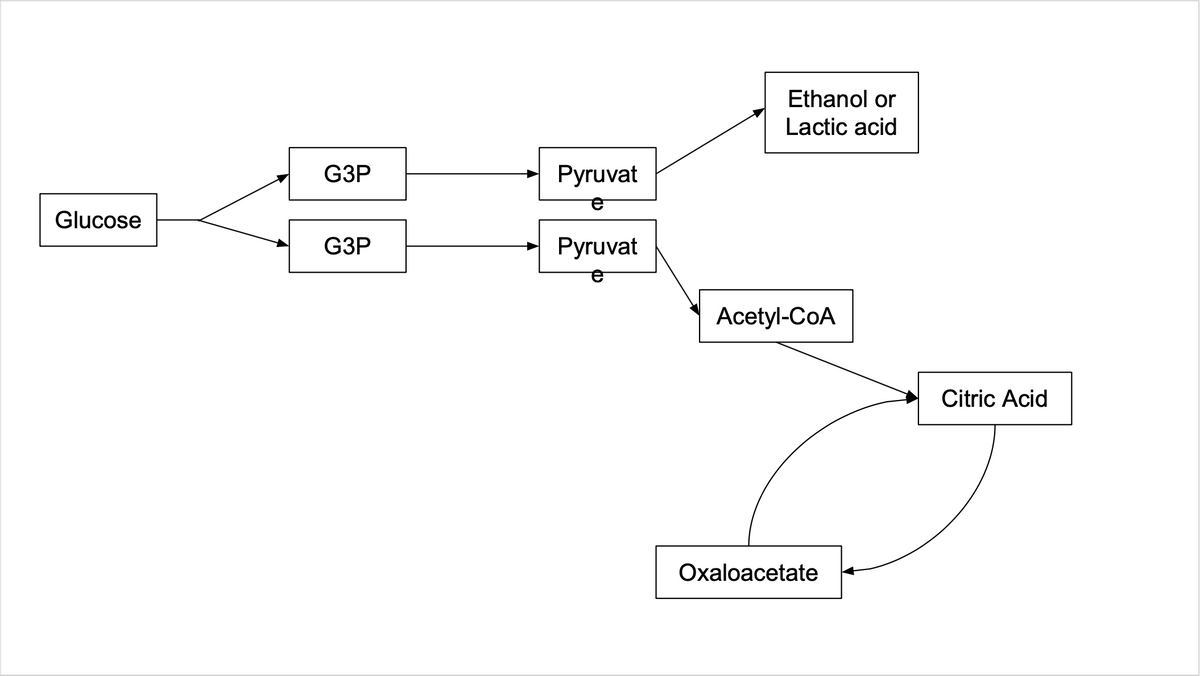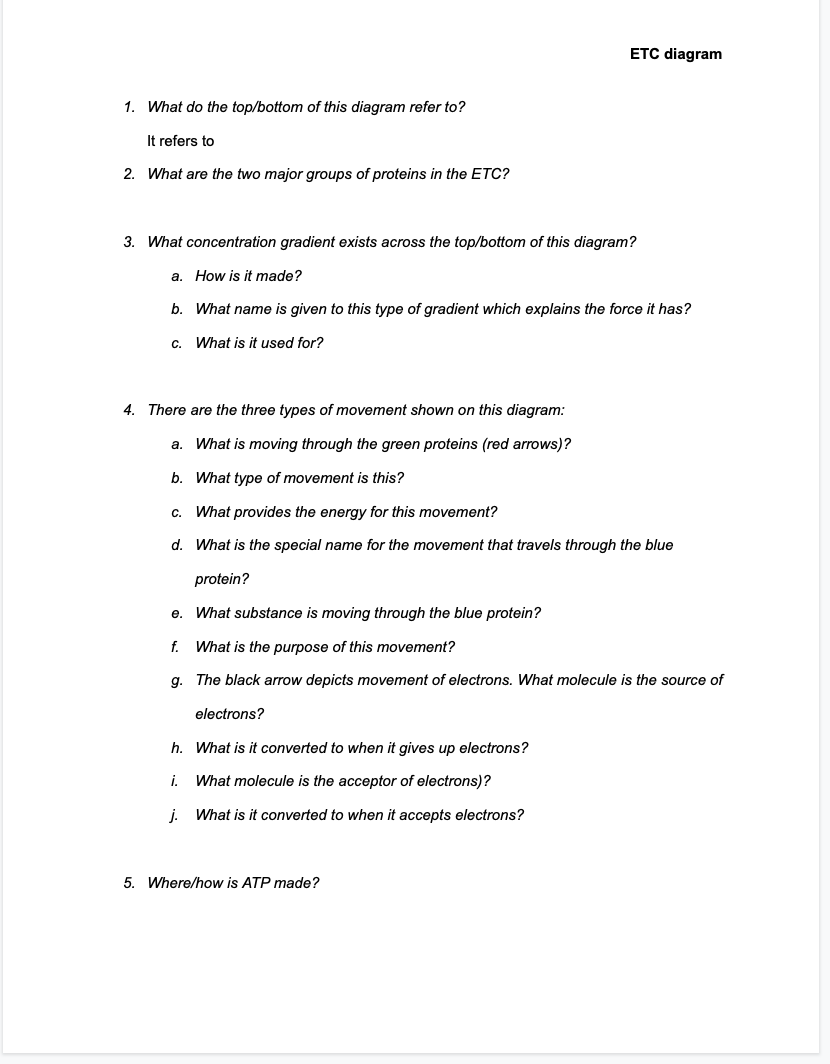Chapter6: Oral Medication Labels And Dosage Calculation
Section: Chapter Questions
Problem 9.4P
Related questions
Question
answer the questions on the page using the diagram

Transcribed Image Text:Ethanol or
Lactic acid
G3P
Руruvat
Glucose
G3P
Руruvat
Acetyl-CoA
Citric Acid
Охaloacetate

Transcribed Image Text:ETC diagram
1. What do the top/bottom of this diagram refer to?
It refers to
2. What are the two major groups of proteins in the ETC?
3. What concentration gradient exists across the top/bottom of this diagram?
a. How is it made?
b. What name is given to this type of gradient which explains the force it has?
c. What is it used for?
4. There are the three types of movement shown on this diagram:
a. What is moving through the green proteins (red arrows)?
b. What type of movement is this?
c. What provides the energy for this movement?
d. What is the special name for the movement that travels through the blue
protein?
e. What substance is moving through the blue protein?
f. What is the purpose of this movement?
g. The black arrow depicts movement of electrons. What molecule is the source of
electrons?
h. What is it converted to when it gives up electrons?
i.
What molecule is the acceptor of electrons)?
j. What is it converted to when it accepts electrons?
5. Where/how is ATP made?
Expert Solution
This question has been solved!
Explore an expertly crafted, step-by-step solution for a thorough understanding of key concepts.
This is a popular solution!
Trending now
This is a popular solution!
Step by step
Solved in 2 steps

Knowledge Booster
Learn more about
Need a deep-dive on the concept behind this application? Look no further. Learn more about this topic, biology and related others by exploring similar questions and additional content below.Recommended textbooks for you



